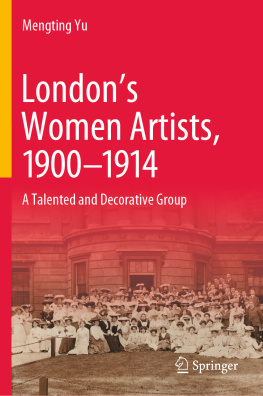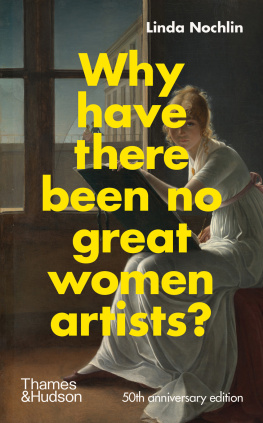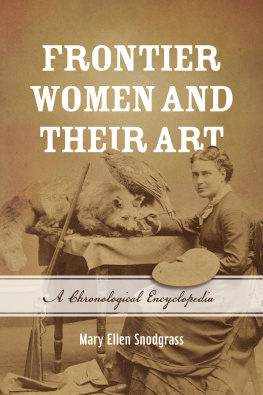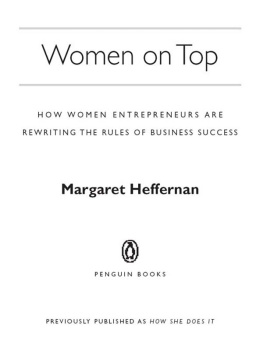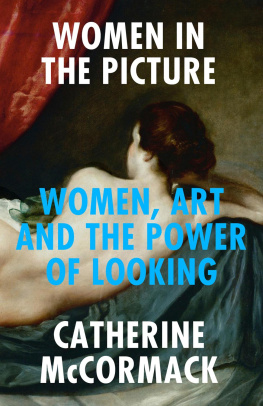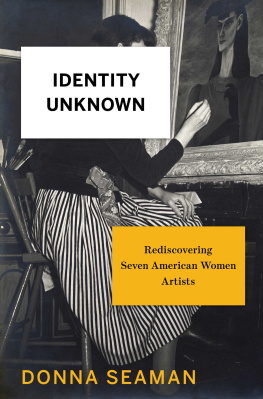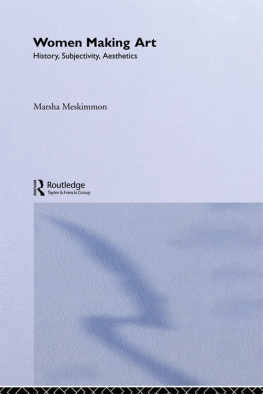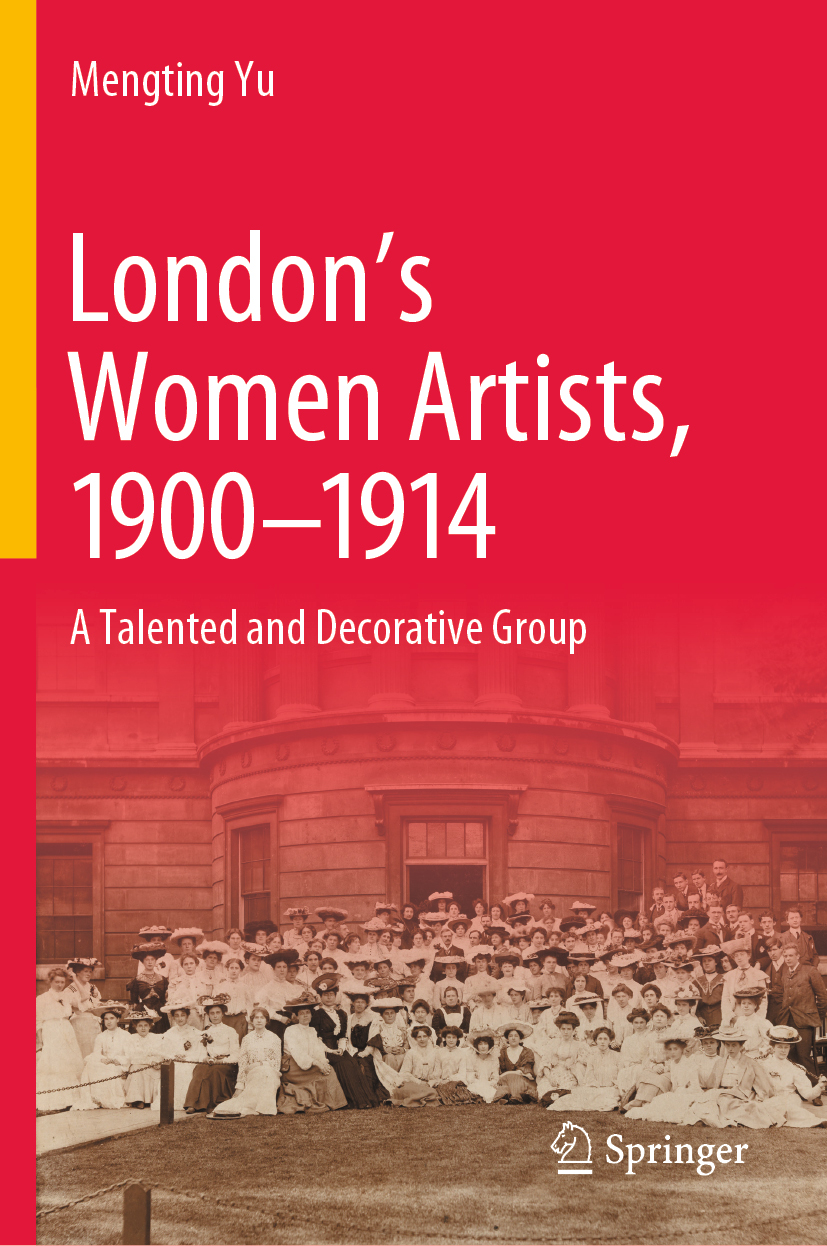Mengting Yu
Londons Women Artists, 19001914
A Talented and Decorative Group
1st ed. 2020
Mengting Yu
Independent Scholar, Boulder, CO, USA
ISBN 978-981-15-5704-0 e-ISBN 978-981-15-5705-7
https://doi.org/10.1007/978-981-15-5705-7
Springer Nature Singapore Pte Ltd. 2020
This work is subject to copyright. All rights are reserved by the Publisher, whether the whole or part of the material is concerned, specifically the rights of translation, reprinting, reuse of illustrations, recitation, broadcasting, reproduction on microfilms or in any other physical way, and transmission or information storage and retrieval, electronic adaptation, computer software, or by similar or dissimilar methodology now known or hereafter developed.
The use of general descriptive names, registered names, trademarks, service marks, etc. in this publication does not imply, even in the absence of a specific statement, that such names are exempt from the relevant protective laws and regulations and therefore free for general use.
The publisher, the authors and the editors are safe to assume that the advice and information in this book are believed to be true and accurate at the date of publication. Neither the publisher nor the authors or the editors give a warranty, expressed or implied, with respect to the material contained herein or for any errors or omissions that may have been made. The publisher remains neutral with regard to jurisdictional claims in published maps and institutional affiliations.
Cover image: The earliest unofficial class photo at the Slade, c. 1905. Retrieved from the Slade Archive Project https://www.ucl.ac.uk/slade/sladearchive/class-photos UCL Record Office. Note This class photo was taken after the annual Slade Strawberry Picnic on June 23, 1905. The image likely represents only some of the students at the Slade at the time, but still shows that the women students were predominant.
This Springer imprint is published by the registered company Springer Nature Singapore Pte Ltd.
The registered company address is: 152 Beach Road, #21-01/04 Gateway East, Singapore 189721, Singapore
This book is dedicated to Yang, Juniper, and my parents
Preface
Despite substantial art historical research on British painters working at the beginning of the twentieth century, little is known about women artists who inhabited and contributed to Londons vibrant art scene. This book takes its starting point from Alicia Fosters article Gwen Johns Self-Portrait: Art, Identity and Women Students at the Slade School, published in 2000, where a talented and decorative group was used to describe common attitudes toward women artists in the late nineteenth- and early twentieth-century London. This pejorative attribution implied strongly a status less significant to that of their male counterparts. It is this widely held patronizing view that I have extracted for the title of this book and challenged throughout the five chapters. To do so, I have examined womens art education, in particular, at the Slade School of Fine Art and the role of its graduates within a selection of Londons exhibition groups, societies, and publications (such as the New English Art Club, Allied Artists Association, London Group, and Rhythm). I have also reconstructed the role of the Womens International Art Club (WIAC), hitherto entirely overlooked in art historical study of the era, and it is the arrival of this organization in London in 1900 that sets the first of my chronological parameters. The closing date of 1914 was chosen as it marks the broad cultural rupture associated with the outbreak of the Great War. This research has demonstrated that women artists inhabited and contributed to the capitals vibrant art scene and that they were influential, high-profile, and widely critiqued in the opening decades of the twentieth century. By returning to the untapped archives, this book, therefore, recalibrates our understanding of the role, output, and reception of women artists in London during what was indubitably a vibrant and innovative period in the history of British art.
It must also be understood that this book cannot be comprehensive in the sense of including every single woman in the period in question but is intended to insert women artists individual and collective voices and experiences into history and contemplate their surviving artworks. It is essential to trace how women art students developed from academic institutions to their professional careers by joining and facilitating collective enterprises. And from the outset, this book consciously turns attention away from well-established histories of high-profile groups such as Bloomsbury Group, the Vorticists, and the Futurists, in favor of subjects who had receded into the shadows, and only rarely, and in some cases never, considered in the histories of twentieth-century British art. Therefore, this book not only offers an opportunity to quantify and/or challenge long-held beliefs, recovering the names of artists now forgotten and the works they created, but also presents a body of knowledge previously lacking and working toward the recovery and analysis of the achievements of the inadequately labeled talented and decorative group. More importantly, this book presents sufficient investigation and documentation to highlight an alternative dynamism that future art historians will wish to consider and further explore.
Mengting Yu
Boulder, USA
Acknowledgements
I would like to thank all those individuals who contributed to this research and the making of this book. In particular, I would like to express my deep and sincere gratitude to my Ph.D. supervisor, Michael J. K. Walsh, for his patient guidance, invaluable insights, and consistent support. His encouragement to bring my experience as an artist into the realm of academic studies has led me to perceive art and art history from a different perspective. I am also indebted to many others who helped broaden and deepen the scope of this work. For their invaluable thought-provoking comments, critiques, and constructive feedback, special thanks must go to Frances Spalding, Jonathan Black, Andrea Nanetti, Dominika Buchowska, Zeliha Gul Inanc, Sujatha A. Meegama, and M. Javad Khajavi.
I am truly grateful for the NTU Research Scholarship from the Ministry of Education, Singapore, and three external research grants: the Research Support Grants from The Paul Mellon Centre for Studies in British Art in 2015 and 2016, as well as the Dissertation Fellowship from the Harry Ransom Center at The University of Texas at Austin in 2015without their support, this publication would not have been possible.
I must also acknowledge the generous assistance received from the following picture libraries: University College London, Tate Britain, National Art Library, and Womens Art Library (Goldsmiths, University of London). Special mention must go to Dan Mitchell at the UCL Special Collections; George Richards, Helen Downes, Nina Pearlman, and Andrea Fredericksen from the UCL Art Museum; Robert Winckworth from the UCL Record Offices; Liz Bruchet from the UCL Slade Archive Project; Althea Greenan from the Womens Art Library; Louise Burley from Tate; Jack Glover Gunn from the V&A; Giovanni Forti and Tomas Haggerty from Bridgeman Images; and Bridget Gayle Ground and Rick Watson from the Harry Ransom Center. I would also like to extend a special thanks to Dr. Mark Gaipa and The Modernist Journals Project supported by Brown University and the University of Tulsa for their high-quality digital scans of Rhythm Magazines and other modernist periodicals.

